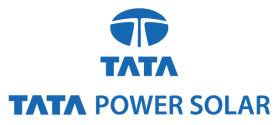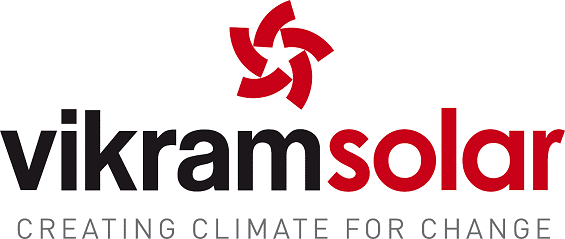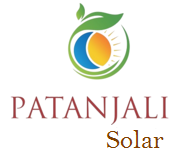Solar Panel Price
Solar Panels are the source of energy which capture energy from the sun and turn it into electricity. Solar panel price or cost anywhere between Rs 20 per watt to Rs 30 per watt depending on the quantity. Generally, types of solar panels are Mono Perc solar panel, Poly crystalline solar panel and Top Con solar panels. Each type of solar panels has its own unique advantages and disadvantages.
Solar Panel Price List
| Solar Panel | Price | Per watt(Rs) |
| Solar Panel 50 watt | 2000 | 40 |
| Solar Panel 75 watt | 3000 | 40 |
| Solar Panel 100 watt | 3500 | 35 |
| Solar Panel 150 watt | 5250 | 35 |
| Solar Panel 200 watt | 6000 | 30 |
| Solar Panel 250 watt | 7500 | 30 |
| Solar Panel 330 watt | 9900 | 30 |
| Solar Panel 335 watt | 10050 | 30 |
| Solar Panel 540 watt | 14040 | 26 |
| Solar Panel 550 watt | 14300 | 26 |
| Solar Panel 585 watt | 14625 | 25 |
| Solar Panel 590 watt | 14750 | 25 |
| Solar Panel 620 watt | 15500 | 25 |
Types of Solar Panels ?
- Monocrystalline Solar Panel
- Polycrystalline Solar Panel
- Thin Film Solar Panel

| Solar Panel Types | Advantages | Disadvantages |
| Mono Perc Solar Panel | High efficiency/ performance | Higher costs |
| Efficiency upto 23 % | ||
| Temperature co-efficient | ||
| Occupy less space | ||
| Poly crystalline Solar Panel | Low cost | Lower efficiency/ performance |
| Slightly lower heat tolerance | Efficiency typically 15-18% | |
| Occupy more space | ||
| Thin Film Solar Panel | Lightweight and Flexible | Lowest efficiency/ performance |
| Efficiency typically 08-14% | ||
| Shorter Warranty |
Monocrystalline Solar Panel
Monocrystalline solar panels solar cells are made from a single crystal of silicon. Monocrystalline solar panels are generally thought as a premium solar product. The main advantages of monocrystalline solar panels are higher efficient. In these solar panels, silicon is formed into bars and cut into wafers, as we know the cell is composed of a single crystal, so electrons that generate a flow of electricity have more room to move.
Advantages of Monocrystalline solar panel
- Highest efficiency as a comparison to other types of solar panels.
- Monocrystalline solar panels convert more than 22% of sunlight into electricity.
- Monocrystalline solar panels are space-efficient, they also occupy the less amount of space compared to any other types of solar panels.
- Monocrystalline solar panels have a long lifespan of a 25-year warranty.
- These solar panels are temperature co-efficient.
Disadvantages of Monocrystalline solar panel
- Monocrystalline solar panels are the most expensive. But most of the manufacturers making monocrystalline solar panels targeting the premium brand in the market.
Monocrystalline Solar Panel Price List
| Monocrystalline Solar Panel | Price | Per watt(Rs) |
| Solar Panel 350 Watt | 11900 | 34 |
| Solar Panel 355 Watt | 12070 | 34 |
| Solar Panel 390 Watt | 13260 | 34 |
| Solar Panel 540 Watt | 13500 | 25 |
| Solar Panel 550 Watt | 13750 | 25 |
| Solar Panel 585 Watt | 14625 | 25 |
Polycrystalline Solar Panel
Polycrystalline solar panels have solar cells which made from many silicon fragments that are melted together in a mould before being cut into wafers. Polycrystalline solar panels were previously thought to be inferior as a comparison to monocrystalline solar panel because they are slightly less efficient, however, because of the cheaper method by which they are made of coupled with only slightly lower efficiencies they have become the dominant technology in solar panels market.
Advantages of Polycrystalline solar panel
- The process used to make polycrystalline solar panel is simpler and less costly.
- In polycrystalline solar panel, the amount of waste silicon is less compared to a monocrystalline solar panel.
- Polycrystalline solar panels tend to have slightly lower heat tolerance as other types of solar panels.
- Polycrystalline solar panels will tend to have a higher temperature coefficient as a comparison to other than solar modules made with mono cells. This means that as heat increased output of polycrystalline solar panels cell will fall less. However, in practice, these differences are very minor.
Disadvantages of Polycrystalline solar panel
- Polycrystalline solar panels cover a larger surface to output the same electrical power as monocrystalline solar panel produces.
- The efficiency of polycrystalline solar panels is typically 15-18%. Because of lower silicon purity, polycrystalline solar panels are not as efficient as a comparison to monocrystalline solar panels.
- Polycrystalline solar panels have Lower space-efficiency.
Thin Film Solar Panel
Thin-film solar panels are a totally different technology as a comparison to Monocrystalline solar panels and Polycrystalline solar panels. A thin-film solar panel can be identified as a solid black appearance, if the solar panels have no frame it is a thin-film solar panel.
Advantages of Thin Film solar panel
- Thin Film solar panels are cheaper to manufacture as a comparison to crystalline-based solar panels.
- Thin Film solar panels can be made flexible, which opens for many new potential applications.
- In Thin Film, solar panel high temperatures and shading have less impact on solar panel performance.
Disadvantages of Thin Film solar panel
- The efficiency of polycrystalline solar panels is typically 08-14%.
- Thin-film solar panels are in general not very useful for in most residential situations because they require a lot of space.
- Crystalline solar panels produce up to four times more output as thin-film solar panels for the same amount of space.
- Thin-film solar panels tend to degrade faster than the crystalline solar panel that is why they typically come with a shorter warranty.
Question and Answer On Solar Panel?
Question:- What is Solar Panel?
Answer: - Solar panels are devices that convert sunlight into electricity. They are made up of crystalline silicon cell which tends to generate electricity in the presence of sunlight.
Question:- How solar panels work?
Answer: - Solar cell composed of two layers of semiconductor material which opposite charge when sunlight falls on the surface of the cell then electron starts travelling from one layer to another providing a flow of electricity.
Question: - How many solar panels are needed to run a house?
Answer: - Generally need 10 solar panels to completely cover electrical power needs. 5 KWp solar panels generate appx 600 Units monthly, which is an average consumption of a family.
Question: - How long do solar panels last?
Answer: - Solar panels are usually having a warranty for 25 years. Solar panel with a degradation rate of 1% per year will be 10% less efficient after 10 years and its means that after 25 years solar panels still operate at 75% efficiency or better.
Question: - How much will I really save on my electricity bills with solar panels?
Answer: - Yes you can save 70–90% of your monthly electricity bill that depends on how much electricity your home or business uses, the rate your electricity company charges, and several other factors. Solar Panels give you the ability to save money by creating a natural source of energy that has the ability to power your home or office.
Question: - What is the cost of a solar panel?
Answer: - The price or cost of the solar panel depending on the wattage and types of solar panel, generally solar panel price in India is 22 to 26 rupees per watt.
Question: - What are the types of solar panels?
Answer: - There are three types of Solar panels. Monocrystalline solar panels, Polycrystalline solar panels, Thin-film solar panels and bi-facial solar panels.
Question: - What is a Monocrystalline solar panel?
Answer: - Monocrystalline solar panels solar cells are made from a single crystal of silicon formed into bars and cut into wafers, as we know the cell is composed of a single crystal, so electrons that generate a flow of electricity have more room to move.
Question: - What is a Polycrystalline solar panel?
Answer: - Polycrystalline solar panels have solar cells which made from many silicon fragments that are melted together in a mold before being cut into wafers. Polycrystalline solar panels were previously thought to be inferior in comparison to monocrystalline solar panels because they are slightly less efficient.
Question: - What is a Thin-film solar panel?
Answer: - Thin-film solar panels are a totally different technology as a comparison to Monocrystalline solar panels and Polycrystalline solar panels. A thin-film solar panel can be identified as a solid black appearance, if the solar panels have no frame it is a thin-film solar panel. They are less efficient as a comparison to a crystalline solar panels.
Question: - Which is the best solar panel?
Answer: - Monocrystalline solar panels have the highest efficiency in comparison to other types of solar panels because it converts more than 20 to 24% of sunlight into electricity.
Question: - How do I identify a Monocrystalline solar panel?
Answer: - Monocrystalline solar panels can be identified from the solar cells which all appear as a single flat color and solar cells are made from a single crystal of silicon.
Question: -What is the cost of a monocrystalline solar panel?
Answer: - Monocrystalline solar panels have the highest efficiency in comparison to other types of solar panels. Monocrystalline solar panel price in India is 24 to 26 rupees per watt.
Question: - What is the cost of a 1 kW solar panel in India?
Answer: - Price of 1 KWp solar panel in India is Rupees 24000 to 30000.
Question: -What is the cost of a Polycrystalline solar panel?
Answer: - Polycrystalline solar panels have less efficiency in comparison to Monocrystalline solar panels. Polycrystalline solar panel price in India is 22 to 24 rupees per watt.
Question: - Is there any maintenance cost for Solar panels?
Answer: - Solar panels generally require very little maintenance. They are very durable and reliable for 25 years with no maintenance. The only maintenance you should need to perform is to wash or clean the solar panels two to three times a month, which you can easily do with a solar panel cleaning kit.
Question: - How do solar panels work in the snow?
Answer: - If snow covers your solar panels, then they can't produce electricity. Solar panels need sunlight to produce power, but you need a solar panel wiper or cleaning kit to remove the snow.
Question: - Do solar panels work in the rain?
Answer: - Solar panels use direct sunlight to generate electricity, Solar panels will still work even when the light is reflected or partially blocked by clouds. So in the rainy season, they will work but are less efficient.
Question: - Are solar panels dangerous?
Answer: - Solar panels are not dangerous, they can't explode when you drop solar panels and they can't set your house or office on fire.
Question: - Do solar panels work at night?
Answer: - Solar panels require sunlight to generate electricity for your home or office. so they do not work at night.
Question: - Which solar panel is better monocrystalline or polycrystalline?
Answer: - Monocrystalline solar panels have the highest efficiency in comparison to polycrystalline solar panels. Monocrystalline solar panels convert more than 24% of sunlight into electricity. Monocrystalline solar panels are space-efficient, they also occupy less amount of space compared to polycrystalline solar panels.
Question: - What are the advantages of solar energy?
Answer: - Solar power is pollution-free and causes no greenhouse gases to be emitted after installation. Renewable energy that is available every day of the year, even on cloudy days produces some power. Reduced dependence on foreign oil and fossil fuels.













